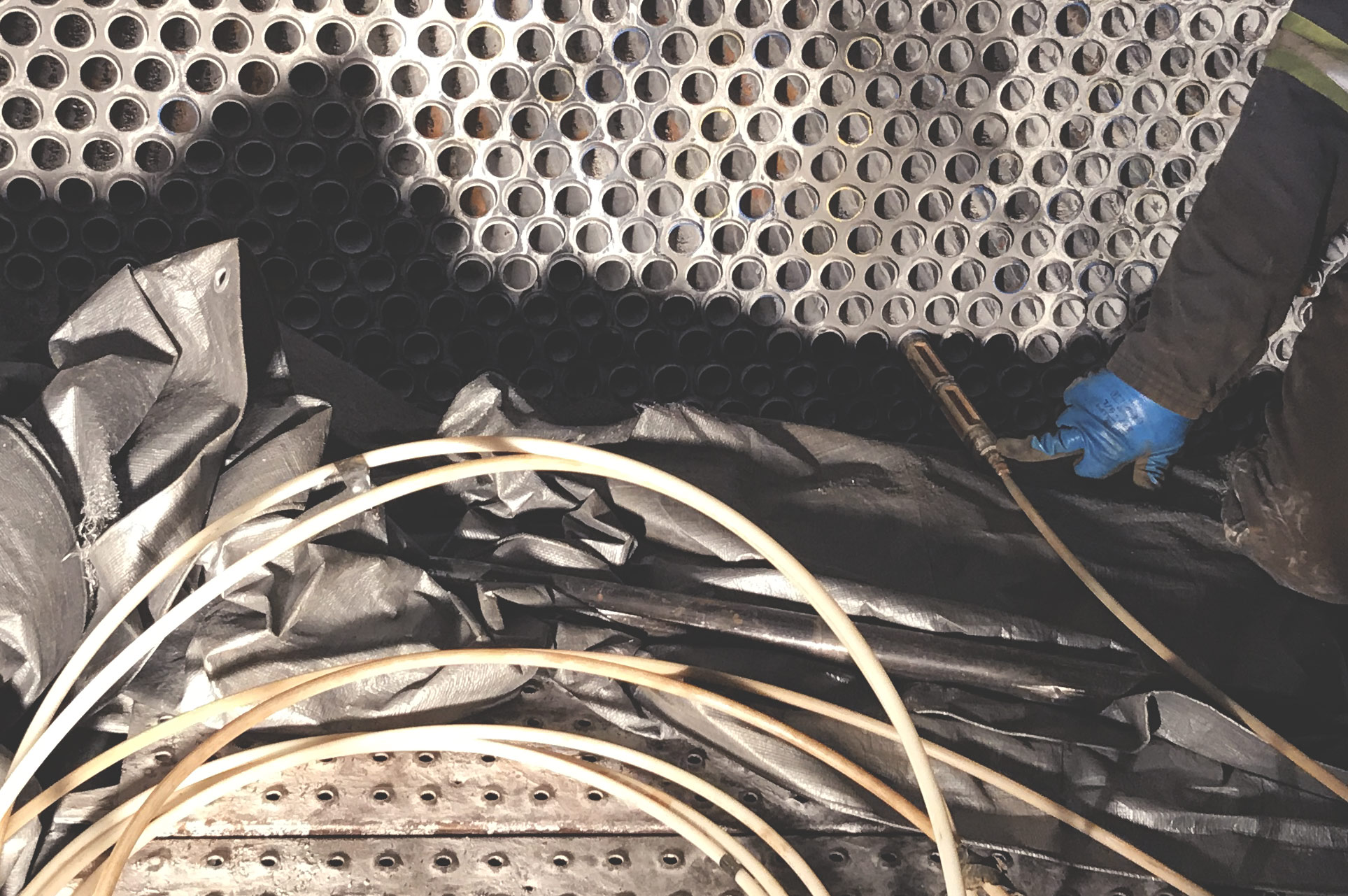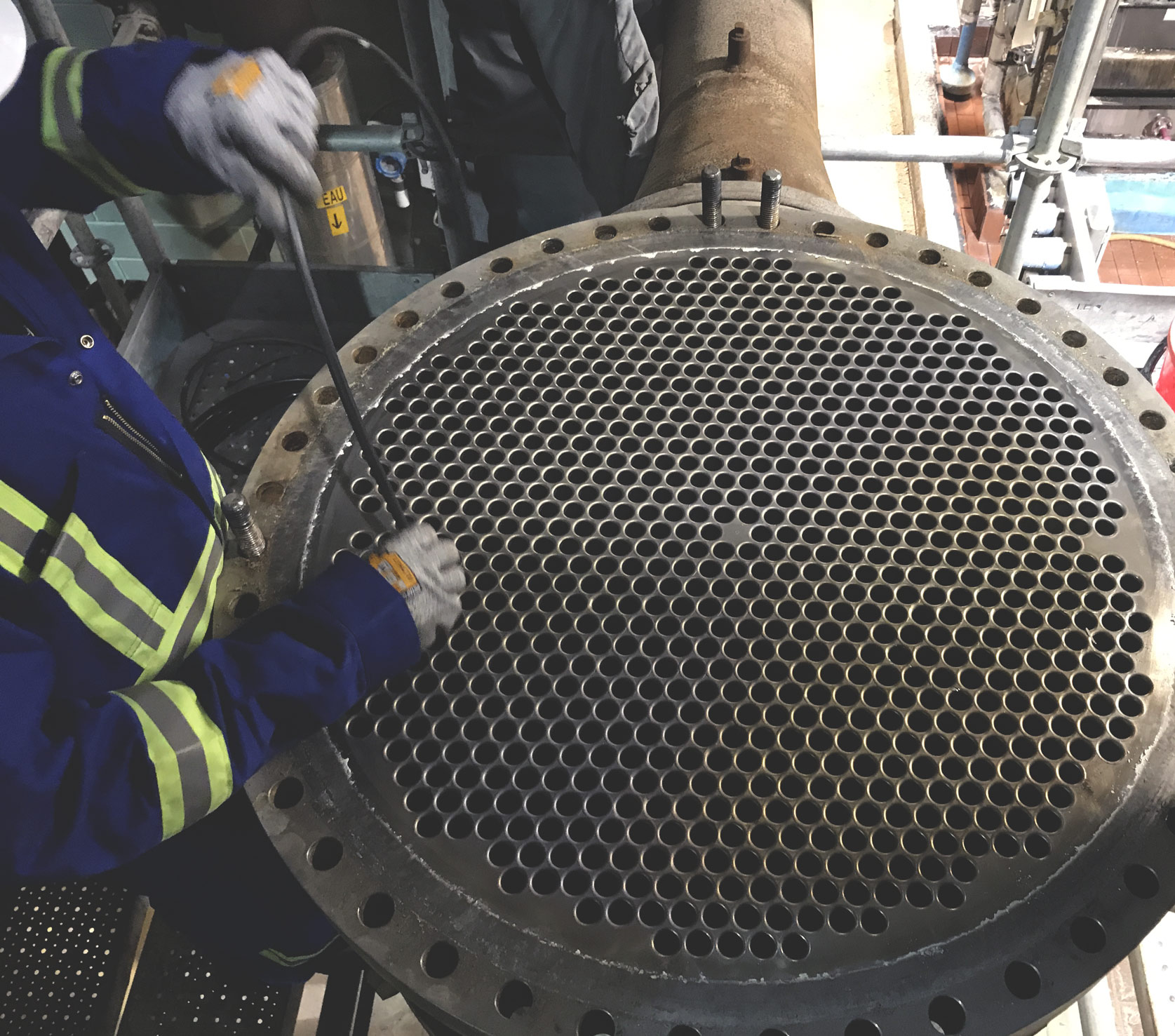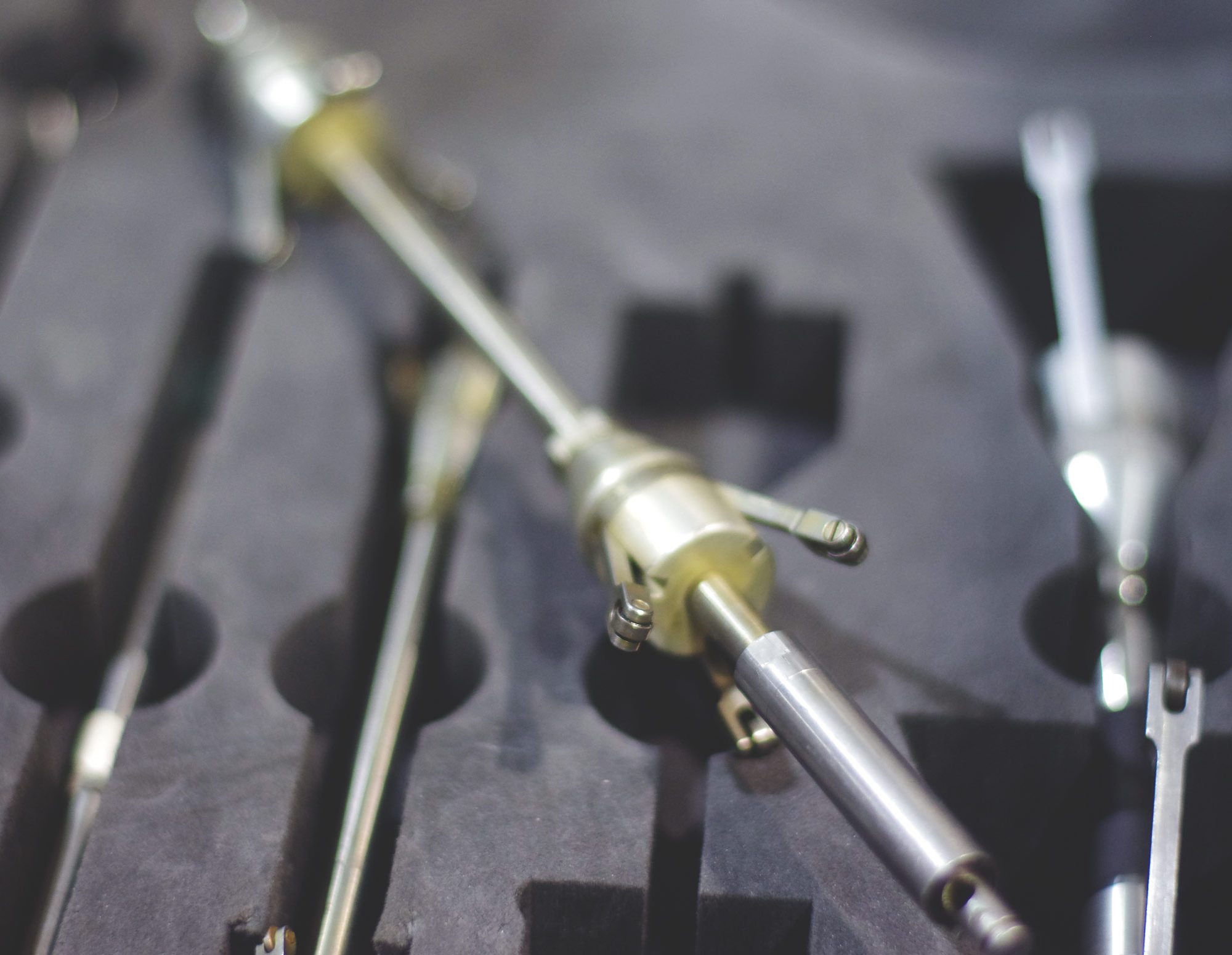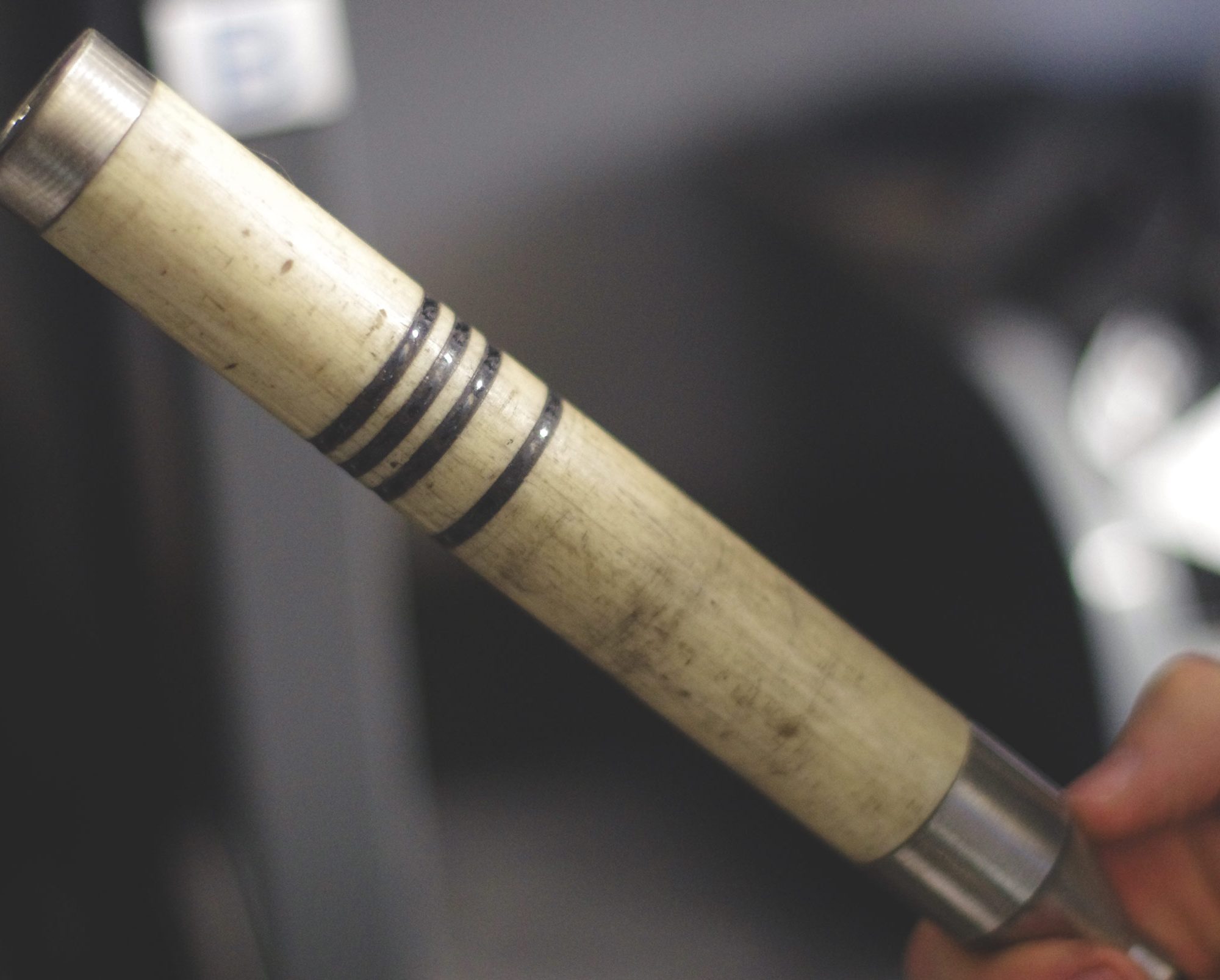Remote Field Testing (RFT)
Remote Field Testing is used for the inspection of steel pipes and tubes. The technology is based on the use of a probe comprising a single or multiple transmission coils that are positioned at twice the distance of the pipe diameter from the reception coil. RFT is also based on a direct transmission mode allowing for detection of internal and external flaws.
This NDT method is typically used on ferromagnetic tubes of heat exchangers and boilers and is also effective to measure loss of thickness.
Advantages:
- Fast and easy solution for corrosion detection in ferromagnetic tubes;
- Normalized sensitivity for internal and external surfaces;
- Highly sensitive to thickness variations.

Magnetic Flux Leakage (MFL)
Magnetic Flux Leakage inspection (MFL) is based on electromagnetism and the measurement of permeability variations. The Magnetic Flux Leakage analysis confirms the presence of potential flaws due to wall thickness loss caused by corrosion or surface flaws such as cracks.
For ferromagnetic tube inspection performed with MFL, a probe made of a single strong magnet induces a magnetic field in the tube until saturation. Magnetic sensors strategically positioned between the magnet poles detect the flux leakage when a thickness loss happens in the pipe. The magnetic field “leaks” out of the tube because of its incapacity to be magnetized beyond the point of saturation. This technique is mainly used in refineries.
Advantages:
- Quick and easy solution for corrosion detection in ferromagnetic tubes;
- Sensitive to corrosion pits;
- Compatible with finned tubes inspection.
Eddy Current Testing (ECT)
Eddy Current Testing (ECT) is based on the use of a probe made of a single coil in which, an alternating current is sent. This generates a circular magnetic field around the coil which then induces eddy currents of the opposite direction into the pipe wall. Discontinuities or loss of wall thickness alter the eddy current flow which translates into a change of impedance in the coil. This can be visualized by the operator giving the indication of a potential flaw.
This technique is mainly used to detect discontinuities or loss of wall thickness of non-ferromagnetic tubes.
Advantages:
- Quick and easy solution for corrosion detection in non-ferromagnetic tubes;
- Detection of cracks and indications near the surface;
- No contact between the probe and the part is needed;
- Compatible with integral finned tubes inspection.

Internal Rotary Inspection System (IRIS)
Internal Rotating Inspection System (IRIS) is a technique using Conventional Ultrasound. An IRIS probe is made of a transducer that generates ultrasounds in the axial direction of the tube towards a 45° mirror. The tube is flooded in water to ensure the necessary coupling for ultrasounds to travel into the parts internal surface (ID) and to penetrate up to the tube’s outer surface (OD). The thickness can be automatically measured. Part of the water supply is used to rotate a turbine which revolves the mirror to ensure a complete 360° coverage throughout the entire length of the tube.
Advantages:
- Versatile solution providing precise thickness measurements;
- Effective on various materials and thicknesses;
- Can be complementary to other techniques;
- Data visualization can be customized.

Near Field Testing (NFT)
Near Field Testing (NFT) uses a probe made of a transmitting coil located between two reception coils. The transmission coil generates a magnetic field that induces highly concentrated Eddy Currents in the parts internal surface which will be disturbed by losses of wall thickness. The NFT technique is specifically created for the inspection of fin fans.
Advantages:
- Efficient method of internal corrosion in finned tubes;
- Equipment simple to pick up and deploy.

 Are you facing inspection challenges?
Are you facing inspection challenges?
Our team of specialists is here to assist you. Discover how our services can effectively and professionally address your inspection needs.